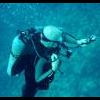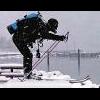
IS IT TRUE about....
#1

Posted 28 August 2009 - 08:45 AM
Contact me directly at Kamala@SingleDivers.com for your private or group travel needs or 864-557-6079 AND don't miss SD's 2018-2021 Trips! ....here! Most are once in a lifetime opportunities...don't miss the chance to go!!
SD LEGACY/OLD/MANUAL Forms & Documents.... here !
Click here TO PAY for Merchandise, Membership, or Travel
"Imitation is the sincerest flattery." - Gandhi
"Imitation is proof that originality is rare." - ScubaHawk
SingleDivers.com...often imitated...never duplicated!
Kamala Shadduck c/o SingleDivers.com LLC
2234 North Federal Hwy, #1010 Boca Raton, FL 33431
formerly...
710 Dive Buddy Lane; Salem, SC 29676
864-557-6079 tel/celfone/office or tollfree fax 888-480-0906
#2

Posted 28 August 2009 - 08:50 AM
Alot of old and new divers seem to forget there training in this very important area of diving.
Bubski
no trees were harmed while posting any of my messages,
however a significant number of electrons were inconvenienced.
Buy Lawn Mower and Chain Saw Parts at...
Amazon.com
#3

Posted 28 August 2009 - 09:17 AM
* A diver at 99 ft (salt water) ascends 11 feet. The absolute pressure on the diver goes from 4 atm (absolute) to 3-2/3 atm. This is a relative pressure change of approximately 8%.
* A diver goes from 11 feet to the surface. The absolute pressure on the diver goes from 1-13 atm to 1 atm. This is a relative pressure change of 25%.
The relative pressure change is what determines the degree of volume change in a gas, per Boyle's Law. In other words, a diver holding his/her breath while ascending from 99 to 88 feet will experience a gas expansion of approximately 8%, whereas the same diver holding his/her breath from 11 feet will experience a gas expansion of approximately 25%. The risk of embolism is that much greater in the 11 feet to the surface interval.
Since gas solubility in a liquid is also proportional to ambient pressure, that last 10-15 feet also plays a critical role in DCS. Notice that the shallowest decompression stop is at 10 feet.
This also explains why a diver generally has to vent the BC more frequently approaching the surface and has to equalize pressure in the ears less frequently when descending past the first 30 feet or so.
Rick
#4

Posted 28 August 2009 - 09:29 AM
#5

Posted 28 August 2009 - 10:09 AM
It's true. That's where the greatest relative pressure change takes place. For example:
* A diver at 99 ft (salt water) ascends 11 feet. The absolute pressure on the diver goes from 4 atm (absolute) to 3-2/3 atm. This is a relative pressure change of approximately 8%.
* A diver goes from 11 feet to the surface. The absolute pressure on the diver goes from 1-13 atm to 1 atm. This is a relative pressure change of 25%.
The relative pressure change is what determines the degree of volume change in a gas, per Boyle's Law. In other words, a diver holding his/her breath while ascending from 99 to 88 feet will experience a gas expansion of approximately 8%, whereas the same diver holding his/her breath from 11 feet will experience a gas expansion of approximately 25%. The risk of embolism is that much greater in the 11 feet to the surface interval.
Since gas solubility in a liquid is also proportional to ambient pressure, that last 10-15 feet also plays a critical role in DCS. Notice that the shallowest decompression stop is at 10 feet.
This also explains why a diver generally has to vent the BC more frequently approaching the surface and has to equalize pressure in the ears less frequently when descending past the first 30 feet or so.
Rick
Thanks for the excellent explaination of the importance of making sure ascents should be even slower the last 10-15 feet. But you lost me on the last statement, personally, I always have to equalize MORE frequently, when descending the first 30 feet.
Bill
Time on earth is precious, time underwater even more so. Live life one day at a time. Dive your @$$ off!!!
#6

Posted 28 August 2009 - 10:46 AM
IS IT TRUE... that the first 15 ft is the most dangerous part of the entire water column and more people get bent going up in the last 10 ft to the boat/surface?
Consider the dangerorness ie: injury rate with in both 15 feet of the dive ladder both verticle axcess and horizontal axcess . I'm sure there's more slip/fall accidents/broken bones, divers giant strides onto non cleared divers, diver fallbacks onto in water divers while climbing ladder. Has to be many more accidents/injurys this way vs overexpansion ascents.
#7

Posted 28 August 2009 - 11:49 AM
It's true. That's where the greatest relative pressure change takes place. For example:
This also explains why a diver generally has to vent the BC more frequently approaching the surface and has to equalize pressure in the ears less frequently when descending past the first 30 feet or so.
Rick
Thanks for the excellent explaination of the importance of making sure ascents should be even slower the last 10-15 feet. But you lost me on the last statement, personally, I always have to equalize MORE frequently, when descending the first 30 feet.
Bill
I read the statement from Rick as being that as you go past the 30' area that you equalize less frequently; and more within the first 30'. Great explanation all the way around Rick, Thanks.
I have seen some divers shoot up after that 15-20' safety stop while I am still taking it slow....
Edited by pmarie, 28 August 2009 - 11:50 AM.
#8

Posted 28 August 2009 - 12:08 PM
I have seen some divers shoot up after that 15-20' safety stop while I am still taking it slow....
You don't even have to kick that last bit to the surface after the safety stop.....just relax, and you slowly (and safely) rise in the water column.
Assuming you have proper weighting and good buoyancy control.....
#9

Posted 28 August 2009 - 12:48 PM
I have seen some divers shoot up after that 15-20' safety stop while I am still taking it slow....
You don't even have to kick that last bit to the surface after the safety stop.....just relax, and you slowly (and safely) rise in the water column.
Assuming you have proper weighting and good buoyancy control.....
You would not believe how many people are very conscientious about their assent TO the safety stop. However once they finish their safety stop their computers SCREAM to the surface following them and their bubbles.
As Tammy said...there is NO reason to kick up...you should be working HARD on not rising too fast.
Many computers have assent meters on them which can help you ensure that you are NOT going up to fast in that last 10-15 feet.
Contact me directly at Kamala@SingleDivers.com for your private or group travel needs or 864-557-6079 AND don't miss SD's 2018-2021 Trips! ....here! Most are once in a lifetime opportunities...don't miss the chance to go!!
SD LEGACY/OLD/MANUAL Forms & Documents.... here !
Click here TO PAY for Merchandise, Membership, or Travel
"Imitation is the sincerest flattery." - Gandhi
"Imitation is proof that originality is rare." - ScubaHawk
SingleDivers.com...often imitated...never duplicated!
Kamala Shadduck c/o SingleDivers.com LLC
2234 North Federal Hwy, #1010 Boca Raton, FL 33431
formerly...
710 Dive Buddy Lane; Salem, SC 29676
864-557-6079 tel/celfone/office or tollfree fax 888-480-0906
#10

Posted 28 August 2009 - 01:55 PM
Bubski
no trees were harmed while posting any of my messages,
however a significant number of electrons were inconvenienced.
Buy Lawn Mower and Chain Saw Parts at...
Amazon.com
#11

Posted 28 August 2009 - 02:00 PM
However once they finish their safety stop their computers SCREAM to the surface following them and their bubbles.
Wow ... that would be me. I never knew about this. In the past there have been many times when I was done with a 5 - 20 minute Safety Stop (I tend to hang around down there wait for the other divers if my buddy runs low on air) and then just bolt to the surface.
My thinking was always, "Hey I just did a 20 minute safety stop, I am super safe now."
Thanks for this great topic.
C
#12

Posted 28 August 2009 - 02:14 PM
Consider the dangerorness ie: injury rate with in both 15 feet of the dive ladder both verticle axcess and horizontal axcess . I'm sure there's more slip/fall accidents/broken bones, divers giant strides onto non cleared divers , diver fallbacks onto in water divers while climbing ladder. Has to be many more accidents/injurys this way vs overexpansion ascents.
Hey Stan you hit it close to home on these and I will certainly second this motion.
On 4th of July this year a guy did a Giant stride onto my head. Needless to say end of dive day and 12 stainless steel staples in my head later the last 15 feet get my vote as the greatest potential for injury. I certainly have my share of beaten up shins from ladders and on one occasion tossed off the ladder in high seas. That one turned into the closest call I've ever had to drowning.
lessons learned: 1 Keep regulator in my mouth until standing on the boat. 2 Dive isn't over until I'm sitting at my station with my rig bungied in.
Each wreck has a tale to tell about its life and its demise.
If you are observant while diving in dark places listen to the account each has to tell, You cannot come away unaffected.
Changes in Latitude, Changes in Attitude
#13

Posted 28 August 2009 - 02:14 PM
#14

Posted 28 August 2009 - 03:07 PM
However once they finish their safety stop their computers SCREAM to the surface following them and their bubbles.
Wow ... that would be me. I never knew about this. In the past there have been many times when I was done with a 5 - 20 minute Safety Stop (I tend to hang around down there wait for the other divers if my buddy runs low on air) and then just bolt to the surface.
My thinking was always, "Hey I just did a 20 minute safety stop, I am super safe now."
Thanks for this great topic.
C
Squidly...if just one diver learns from this I am THRILLED! If its a friend like you.... PRICELESS!!!
I am sooooooooooooooooooooooooooooooo glad that this has been helpful! I'm hoping others will also realize the danger of this all too common practice.
Contact me directly at Kamala@SingleDivers.com for your private or group travel needs or 864-557-6079 AND don't miss SD's 2018-2021 Trips! ....here! Most are once in a lifetime opportunities...don't miss the chance to go!!
SD LEGACY/OLD/MANUAL Forms & Documents.... here !
Click here TO PAY for Merchandise, Membership, or Travel
"Imitation is the sincerest flattery." - Gandhi
"Imitation is proof that originality is rare." - ScubaHawk
SingleDivers.com...often imitated...never duplicated!
Kamala Shadduck c/o SingleDivers.com LLC
2234 North Federal Hwy, #1010 Boca Raton, FL 33431
formerly...
710 Dive Buddy Lane; Salem, SC 29676
864-557-6079 tel/celfone/office or tollfree fax 888-480-0906
0 user(s) are reading this topic
0 members, 0 guests, 0 anonymous users




















